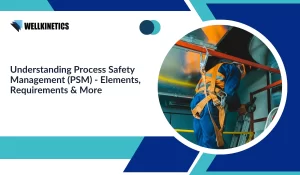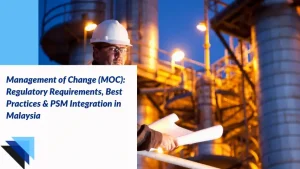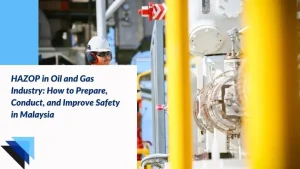In the fast-paced world of oil and gas operations, where safety and risk management are of paramount importance, the Manual of Permitted Operations (MOPO) emerges as a guiding document that ensures compliance and operational integrity. Imagine a scenario where multiple activities are happening simultaneously, with various risks and potential clashes. How do you maintain control and mitigate these risks effectively? This is where MOPO steps in.
MOPO serves as a decision-making tool that outlines the acceptable level of risk for different operational activities. It sets clear guidelines on what can be carried out within a given condition, while also indicating the risk level present. By implementing MOPO, companies can achieve structured and well-coordinated operations, ensuring the safety of personnel and the protection of assets.
In this article, we will dive into the significance of MOPO in oil and gas operations. We will explore its implementation, best practices, and the role it plays in risk management and operational safety. Keep reading as we unravel the complexities of MOPO and discover how it can pave the way for safe and compliant operations in the industry.
Definition and Explanation of MOPO
The Manual of Permitted Operations is a crucial document in the oil and gas industry that outlines the guidelines and procedures for safe and compliant operations. It serves as a comprehensive framework that ensures operational activities are conducted in accordance with industry standards and regulatory requirements.
MOPO defines the permissible scope of work, the acceptable level of risk, and the escalation factors that trigger additional safety measures. It helps identify critical elements and potential risks that may arise during operations, allowing companies to implement the necessary safety controls and mitigate hazards effectively.
One of the key purposes of MOPO is to provide a decision-making tool for operational personnel. It offers a clear understanding of the limitations, precautions, and measures required to ensure safe and efficient operations. MOPO acts as a communication tool that facilitates the coordination of activities among different teams, ensuring a seamless and organized workflow.
By implementing MOPO, companies can effectively manage potential risks and ensure the safety of their personnel, facilities, and the environment. It helps create a proactive safety culture by establishing protocols and procedures for handling various scenarios and emergencies.
Overall, MOPO acts as a vital component of risk management and operational safety in the oil and gas industry. It sets the framework for safe operations, providing a standardized approach that enhances overall safety performance and reduces the likelihood of accidents or incidents.
Remember to always refer to the specific MOPO guidelines established by your organization or regulatory body for accurate and detailed information on its implementation and application.
RELATED: Best Practices for Implementing Process Safety Management in the Oil and Gas Industry
Benefits of Implementing MOPO in the Oil and Gas Industry
Implementing the Manual of Permitted Operations in the oil and gas industry offers numerous benefits, contributing to effective risk management and ensuring operational safety. By following MOPO guidelines, companies can proactively address potential hazards and maintain a high level of safety and compliance. Let’s explore some of the key advantages of implementing MOPO in the industry:
1. Risk Identification and Mitigation: MOPO provides a comprehensive framework for identifying and mitigating risks associated with oil and gas operations. It helps organizations assess potential hazards, evaluate the acceptable level of risk, and implement appropriate control measures. This proactive approach minimizes the likelihood of accidents and operational disruptions.
2. Ensuring Compliance: Compliance with regulatory requirements is of utmost importance in the oil and gas industry. Implementing MOPO helps companies stay compliant by ensuring that all operations align with the necessary regulations and safety standards. This not only reduces the chances of penalties or legal consequences but also enhances the overall reputation and trustworthiness of the organization.
3. Enhanced Operational Efficiency: It enables efficient coordination and scheduling of operations by establishing clear guidelines and procedures. It outlines the permitted activities, responsibilities, and communication protocols, ensuring smooth execution of tasks. This streamlines the workflow, prevents conflicts, and optimizes resource allocation, leading to improved operational efficiency.
4. Improved Operational Safety: The primary objective of MOPO is to enhance operational safety. By implementing this framework, organizations can systematically identify potential risks, evaluate their severity, and implement appropriate safety measures. This includes the use of personal protective equipment (PPE), adherence to safety protocols, and coordination among different teams and contractors involved in the operations.
Key Components and Guidelines of MOPO
The Manual of Permitted Operations serves as a crucial framework for ensuring safe and compliant operations within the oil and gas industry. Here are the key components and guidelines that make up an effective MOPO framework:
Clearly Defined Scope and Boundaries
A comprehensive MOPO document should clearly outline the scope and boundaries of permissible operations. This includes identifying the specific activities, areas, and equipment that fall within the framework. By defining these boundaries, companies can ensure that all operations are conducted within the approved limits.
Risk Assessment and Management
An essential aspect of MOPO is the identification and assessment of potential risks associated with specific operations. Companies must conduct thorough risk assessments to determine the acceptable level of risk for each activity. This involves evaluating factors such as simultaneous operations, external influences, critical elements, and the availability of critical manpower. By assessing and mitigating risks, companies can prevent accidents and maintain operational safety.
Operational Controls and Limits
MOPO provides clear guidelines on the operational controls and limits that need to be in place. This includes the use of a traffic-light system to indicate the risk level present during operations. The system allows for the identification of conditions under which operations can proceed, require caution, or necessitate stopping. Additionally, the MOPO framework specifies the use of additional safety prescriptions, such as the implementation of extra safety controls or the use of personal protective equipment (PPE), to mitigate risks.
Efficient Communication and Coordination
Effective communication and coordination are crucial when implementing MOPO. Companies should establish proper channels for communication between the project team, technical personnel, and operational safety control. This ensures that everyone involved in the operations is aware of the MOPO guidelines and can effectively coordinate their activities to maintain a safe working environment.
Regular Review and Updates
To ensure the ongoing effectiveness of the MOPO framework, regular reviews and updates are necessary. Companies should periodically assess the framework’s efficiency and make necessary adjustments based on operational experience, changes in technology, regulations, and industry best practices.
By incorporating these key components and guidelines into their MOPO framework, oil and gas companies can establish a comprehensive and reliable system that promotes safe and compliant operations.
Best Practices for Implementing MOPO in the Oil and Gas Sector
Successfully implementing the Manual of Permitted Operations in oil and gas operations requires careful planning and adherence to best practices. By following these recommendations, companies can ensure safe and compliant operations while minimizing risks.
1. Develop a Comprehensive MOPO Framework
Create a comprehensive MOPO framework that accounts for all operational activities and potential risks. This framework should outline the specific procedures, guidelines, and protocols to be followed, taking into consideration industry standards and regulatory requirements.
2. Involve Relevant Stakeholders
Engage all relevant stakeholders in the development and implementation of the MOPO framework. This includes technical personnel, operational teams, safety officers, and management. By involving key individuals from various departments, you can ensure that the MOPO framework reflects the collective expertise and experience within the organization.
3. Perform Risk Assessments and Scenario Analysis
Conduct thorough risk assessments and scenario analysis to identify potential hazards, vulnerabilities, and risks associated with different operational activities. This will help in determining the acceptable levels of risk for each activity and establishing appropriate control measures.
4. Establish Effective Communication Channels
Implement clear and effective communication channels to facilitate the dissemination of MOPO guidelines and procedures throughout the organization. This ensures that all personnel are aware of their roles, responsibilities, and the necessary safety precautions to be taken during operations.
5. Regularly Review and Update MOPO
Regularly review and update the MOPO framework to incorporate new industry regulations, safety standards, and operational insights. This ensures that the framework remains relevant and aligns with evolving best practices.
6. Provide Rigorous Training and Education
Offer comprehensive training and education programs to ensure that all personnel are well-versed in the MOPO guidelines. This should include training on recognizing potential risks, understanding the MOPO framework, and complying with safety protocols.
7. Foster a Culture of Safety and Accountability
Promote a culture of safety and accountability within the organization by encouraging open communication, reporting of incidents, and continuous improvement. Regularly assess the effectiveness of the MOPO implementation and make necessary adjustments to enhance safety and compliance.
Remember, effectively implementing MOPO requires a proactive and holistic approach. By following these best practices, companies can safeguard their operations, protect their workforce, and maintain compliance with industry standards and regulations.
Key Takeaways
The Manual of Permitted Operations holds immense significance in the oil and gas industry for ensuring safe and compliant operations. By implementing MOPO guidelines, companies can effectively manage risks and prioritize operational safety.
MOPO acts as a decision-making tool that helps oil and gas companies define acceptable levels of risk and set limits for safe operations. It provides a framework for identifying potential hazards, assessing the impact of different conditions, and implementing additional safety controls to mitigate risks.
The use of MOPO is particularly crucial in scenarios where critical elements or operational procedures fail, or when there is a potential clash of activities. It helps maintain a comprehensive understanding of the risk levels associated with simultaneous operations and enables the coordination of activities to minimize operational hazards.
One of the key benefits of MOPO is its ability to enhance communication and collaboration among teams involved in oil and gas operations. It facilitates the sharing of information, promotes clarity regarding roles and responsibilities, and ensures that all team members have a common understanding of the safety protocols.




